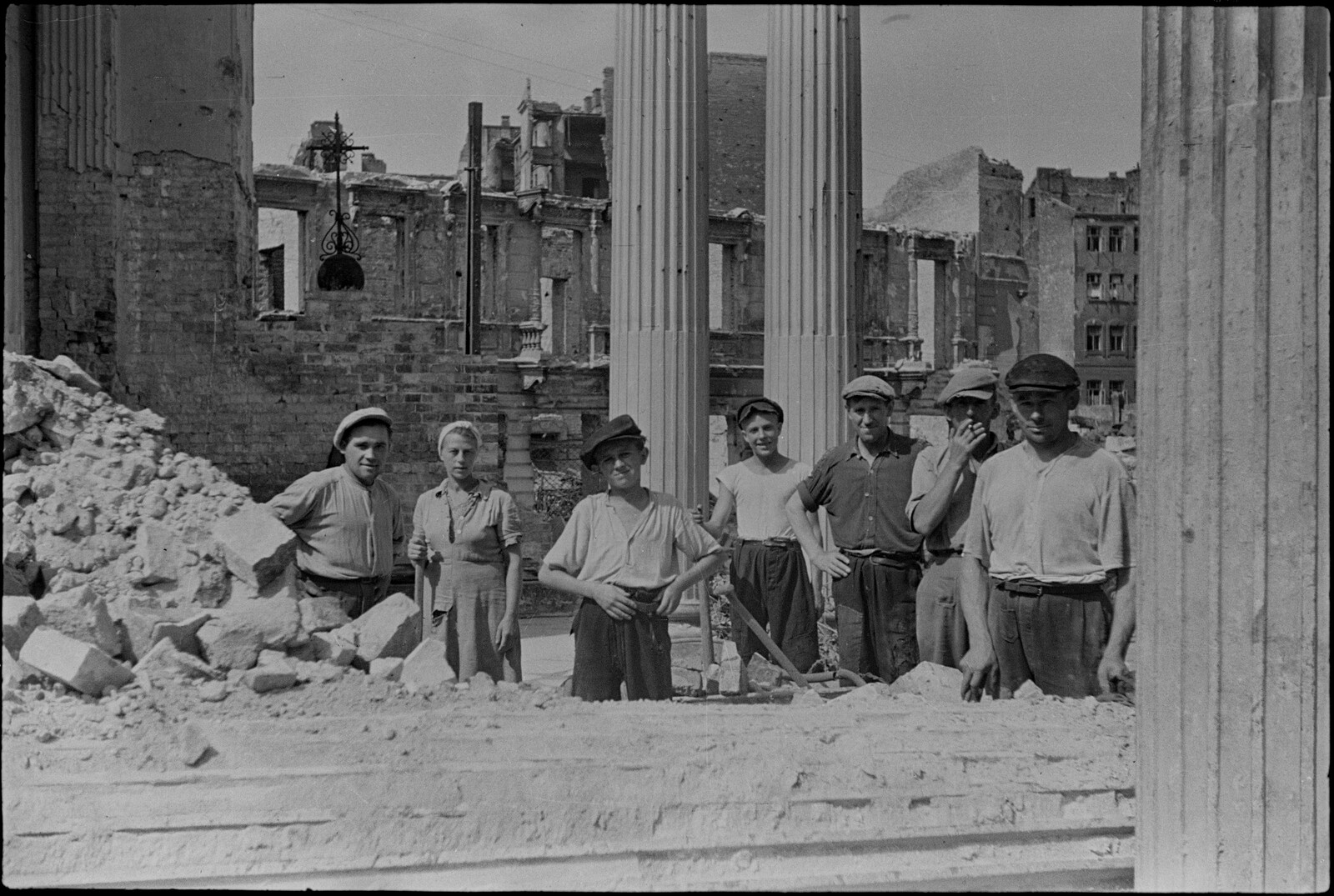March 30–September 3, 2023
Old Town Market Square 28-42
00-272 Warsaw
Poland
Warsaw has risen from rubble. Indeed—rubble was the basic building material, and working amidst the ruins was the stuff of life. Reconstruction was a complex process which required a huge amount of time and labour. It affected Warsaw’s architecture as well as its cityscape. It also had an effect on the social and economic relations that were being rebuilt anew after the war. Warsaw 1945-1949: Rising from Rubble exhibition offers a new perspective on the myth of the postwar reconstruction of the Polish capital city and one of the most interesting pages in its history. The exhibition will be held from March 30 to September 3 in Museum of Warsaw.
The reconstruction phenomenon
The exhibition presents in a novel way a unique character of the city being rebuilt thanks to a collective effort. It follows the process of transforming ruins into rubble, and rubble into building material from which the Varsovians constructed their own future and the future of their city. The first years after the war were spent on removing the rubble and pulling down the ruins. Bricks and iron were being recovered and breeze-blocks were produced of concrete and rubble.
It is the first time that rubble constitutes the narrative core of an exhibition devoted to the reconstruction of Warsaw. We show fragments of sculptures and architecture, stove tiles and ceramics as well as materials used in the process of reconstruction: demolition bricks and rubble concrete. Photographs, graphic art, paintings, documents, maps, iconography as well as film newsreels and oral history video recordings place these exhibits in their historical context. Contemporary context is provided by artists such as Tymek Borowski, Diana Lelonek, Antonina Gugała and architecture studios: CENTRALA and Archigrest.
22 million cubic metres of rubble
What happened to ca 22 million cubic metres of rubble which covered almost the entire city after the war? The exhibition provides an answer to this question as well. In the first years of the reconstruction, the status of rubble was evolving. Initially, it was considered a waste material which ought to be removed. Next, it was regarded as a raw material to be recovered and used to produce new building materials. Ultimately, rubble acquired the status of a symbol of hard collective labour and a bright future for Warsaw and the entire country. This symbol, so eagerly used by the communist regime, is now given a chance to be interpreted anew.
Reduce, reuse, recycle
“History of the reappraisal of rubble may serve as a direct reference to the contemporary debate on sustainable construction at the time of climate crisis, based on the recovery and recycling of materials,” points out Adam Przywara, the exhibition curator. “The 3R principle—namely reduce, reuse, recycle—was applied on a huge scale in postwar Warsaw,” he adds.
“Today, production and circulation of building materials are key issues in both architecture and urban planning. The exhibition shows that the history of Warsaw reconstruction can provide inspiration for thinking about the future of architecture at the time of climate crisis. It also serves as a vital point of reference for contemporary artists and architects,” adds Przywara.
Museum of Warsaw
The Museum of Warsaw came into being in 1936 as the Museum of Old Warsaw, a branch of the National Museum. Since 1949, it has been in operation as an independent institution of the City of Warsaw. The main seat of the Museum of Warsaw is housed in eleven historic tenement buildings in the Old Town Market Square. In 1980, they were all entered in the UNESCO World Heritage List. The Museum initiates and broadens interest in the city; it shapes an aesthetic sensibility, interprets the phenomenon of Warsaw and actively expands its scientific, social and cultural life.
Curator: Adam Przywara. Press contact: Aleksandra Migacz: aleksandra.migacz [at] muzeumwarszawy.pl / T +48 723 249 094. Press material here. More information here.



